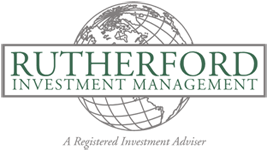Published October 10, 2025

The turning point came Sept. 17, when Federal Reserve Chair Jerome Powell delivered what the market wanted: a quarter-point rate cut to a range of 4 to 4.25 percent. Think of the Fed as the economy’s thermostat – it nudged the temperature up a notch, because growth has cooled a bit, and the job market isn’t as hot as it was. Lowering rates helps keep the expansion going without letting inflation heat up again. Powell’s message was clear: We’re not panicking, but we’re paying attention. As he put it, “downside risks to employment have risen.”
What Powell didn’t say – but the market heard loud and clear – was that this Fed won’t let the economy stumble into recession on its watch. Not with unemployment edging up to 4.3 percent. Not with job growth slowing to a crawl. The market loves nothing more than a Fed that has its back. Importantly, the Fed didn’t promise a quick sprint to cheaper money. It signaled a careful, step-by-step approach that depends on data. That message – steady hands, no sharp turns – helped markets more than the single cut itself.
Falling 10-year bond yields helped at the margin. When long-term interest rates also eased a bit, that took pressure off stock valuations – especially for companies whose profits are expected to grow for years. You could also see small ripples that affect the average consumer: mortgage rates dipped into the 6.26 to 6.30 percent range in late September. That isn’t exactly free money, but it’s enough to awaken the refinancing crowd. Pending home sales perked up. Sometimes, all it takes is a small rate drop to convince buyers to hop off the fence.
Just as the month was ending, Congress did what it seems to do best these days: fail to agree on anything. The midnight funding deadline came and went on Sept. 30, triggering the U.S. government’s first shutdown in nearly seven years. You’d think Wall Street would panic. Instead, the market yawned and hit new highs. Since 1976, the S&P 500 has averaged no change during government shutdowns. Sometimes the market even rallies, as in 2018, when stocks jumped 10 percent during that 35-day circus.
But this time there’s a wrinkle. The shutdown means no September jobs report, no inflation numbers, no data for a data-dependent Fed. We’re flying blind just when the Fed needs those numbers most. It’s like trying to drive at night with your headlights off. The Fed meeting on Oct. 28-29 could be interesting if this drags on. For now, though, the market is treating it as just another Washington sideshow.
Watch the Fed, not the politicians. The shutdown will end; they always do. Markets expect two more quarter-point cuts this year. If inflation flares up, that could change. If the job market softens further, we might get more. Either way, the Fed is your North Star – not whatever drama is playing out on Capitol Hill.
While politicians played their games, technology marched on. And boy, did it march. This year, companies have been pouring real money into the plumbing behind artificial intelligence – data centers, chips, the software that runs on top of them, and the energy sources that will cool and power them. One careful analysis showed that a small slice of business investment tied to technology accounted for nearly all the economy’s growth in the first half of the year. Take that tech investment out, and growth was close to zero. That tells you where businesses see the best returns – and why growth-oriented stocks beat the old economy parts of the market in September.
The Magnificent Seven tech giants gained about 9 percent in September, while small caps and mid-caps limped along. It reminds us of a baseball team with only a cleanup hitter able to get on base. Sure, the team might win some games, but it’s not sustainable in the long term. Sports teams and markets tend to revert to the mean over time. Rebalance on strength rather than chase performance. And keep some dry powder for when sentiment swings. That’s just common sense in any market.
It helps to understand what’s actually powering this market. When companies are spending real money building real infrastructure for a technology transformation, that is not a bubble but rather a build-out. The last time we saw anything similar was the internet backbone build-out. It paid off handsomely for patient investors.
Experience has shown that the loudest worries rarely cause the biggest problems. Right now, everyone’s wringing their hands about shutdowns, tech concentration, and stretched valuations. American companies are writing billion-dollar checks for technology infrastructure like it’s 1999 – except this time they’re actually building things that generate cash flow. When businesses spend this kind of money on real equipment and real capabilities, they’re not gambling. They’re positioning for something transformational. And history shows that’s usually when the skeptics get left behind.
This year has been exhibit A for why following old market sayings can cost you money. May was supposed to be when you sell; instead, there was a rally. September was supposed to be terrible, but we just had our best one in 15 years. Fundamentals, not folklore, are driving returns.
Our approach hasn’t changed: participate in the technology transformation through quality companies, but keep enough diversification to sleep at night. The biggest lesson of 2025? The market doesn’t care about the calendar or clever sayings. It cares about earnings, innovation and growth. Everything else is just noise.
William Rutherford is the founder and portfolio manager of Portland-based Rutherford Investment Management. Contact him at 888-755-6546 or wrutherford@rutherfordinvestment.com. Information herein is from sources believed to be reliable, but accuracy and completeness cannot be guaranteed. Investment involves risk and may result in losses.
